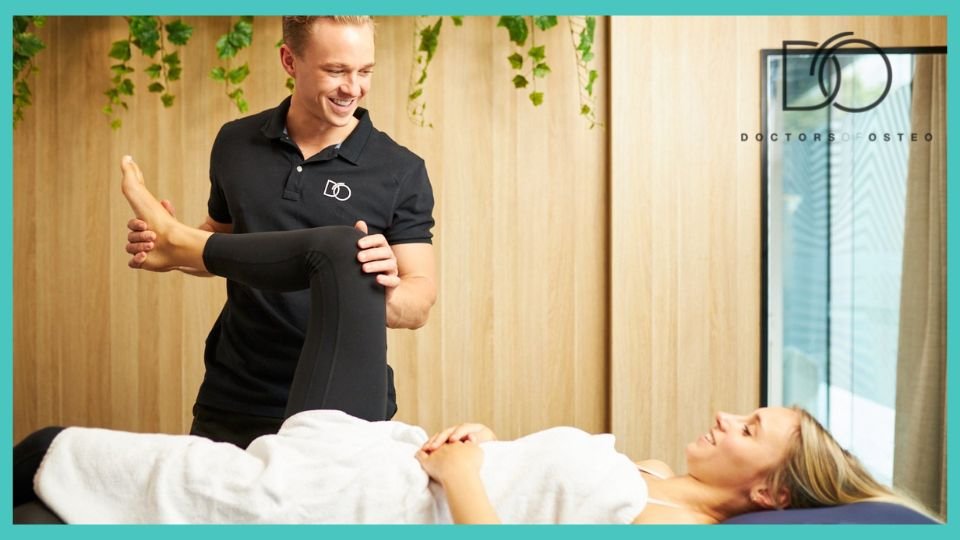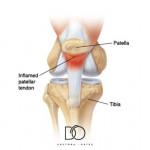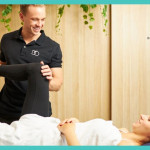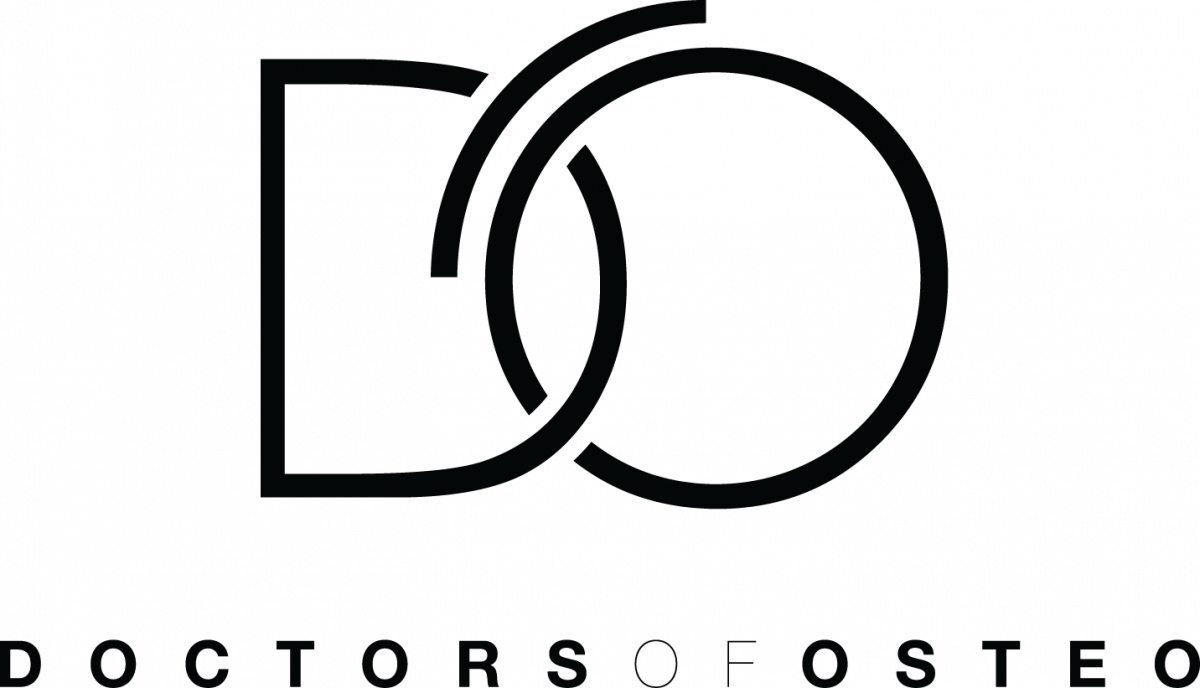Doctors of Osteo Richmond | Osteopathic treatment for patellar tendonitis / Jumper's Knee
If you are experiencing patellar tendonitis or jumper's knee, you may benefit from seeking the help of a Richmond Osteopath. Depending on the cause of your tendinopathy, our team can provide physical therapy, home management plans, or pain management. We want to help you get back to your normal routine as quickly as possible!
Doctors of Osteo is a team of experienced and approachable osteopaths who want to help you manage your patellar tendonitis or trigger finger. Depending on the cause of your condition, we can provide physical therapy, home management plans, or pain management. We want to help you get back to your normal routine as quickly as possible! Contact us today to schedule an appointment.
What is patellar tendonitis / Jumper's Knee?
Patella tendonitis, or more commonly known as Jumper’s knee, is a condition that causes sharp pain at the front of the knee just below the knee cap. As the name suggests, this condition is commonly seen in the athletic population, especially in sports that involve lots of running and jumping. It is a condition that is aggravated with an increase in load and insufficient rest between activities. It is therefore a common problem in athletes with a strict training regimen or with high impact sports.
What causes patellar tendonitis / Jumper's Knee?
Patella Tendinitis or the more chronic form of tendinopathy is due to micro-tears recurring in the patella tendon. An increase in the exertion of the lower limb through scenarios like increasing training or running distance/pace can cause multiple tears. When the patellar tendon isn’t given enough time to rest and restore, it can cause progressive inflammation causing pain and eventually weakening the tendon.
What should I avoid if I have patellar tendonitis / Jumper's Knee?
- Overload: The patellar tendon shouldn’t be overloaded with activity and exercises. This can mean rest from not only training schedules but also activities such as repetitive kneeling like cleaning a floor.
- Tight muscles: Foam rolling and stretching out the front, side and back of your thighs may help decrease the load placed on your patellar tendon.
- Favouring sides: If there are obvious muscle imbalances (i.e. sports that mainly kick with one leg) this can increase the load placed at the front of your knee.
- Inflammatory conditions: Other health conditions such as inflammatory arthritides and conditions of soft tissue structures may impact the functionality of the patellar tendon.
- Inappropriate Footwear: Your foot positioning may also be a contributing factor to tendinopathy as it can cause an uneven distribution of weight through the hip and knee. Shoes with good support may be necessary for recovery and to prevent reoccurrence.
What can I do at home to treat patellar tendonitis / Jumper's Knee?
- Rest/Ice: Resting the legs is especially important in this condition where overuse is a major factor. Icing the area of pain is also ideal to reduce inflammation and tenderness.
- Medication: Non-steroidal Anti-inflammatories (NSAIDs) such as aspirin, ibuprofen and naproxen can reduce the inflammation and pain in the area.
- Bracing and Taping: There are many different types of taping methods and braces of the knee. It is important to note that many of them should not be worn at night or while resting as this can lead to decreased circulation and swelling of the foot and ankle.
- Exercises and stretching: Your osteopath will be able to identify the muscles that may be weak or too tight and causing the pull on the tendon. They will then prescribe a specific home-exercises regime to tackle these imbalances.
What treatments are there for patellar tendonitis / Jumper's Knee?
The course of treatment depends on the cause of the tendinopathy. If it is due to trauma you may want to seek osteopathic assessment as fractures and other injuries sustained by trauma need to be ruled out. If it is due to overuse then physical therapy, coupled with a home management plan, is ideal. If it is due to degeneration of the knee or an inflammatory condition, your osteopath will assist in managing your pain as well as strengthening the supporting structures to take the pressure off the tendon.
Do I have to have a surgery if I have patellar tendonitis / Jumper's Knee?
Patellar tendonitis is commonly treated and resolved with conservative therapy including osteopathy, exercise and load management. On the rare occasions where the tendinopathy doesn't respond to conservative measures or the micro-tearing turns into a major tear, surgery may be indicated. There are multiple methods of surgery depending on the individual, location of trauma and the method of injury. Your orthopaedic surgeon will advise you of the most appropriate method.
Can Osteopaths treat patellar tendonitis / Jumper's Knee?
- Your osteopath will assess your knee and may order radiographic imaging to assist with the correct diagnosis and prognosis (tissue healing time).
- Identification of the actions in your day-to-day life, which may be contributing to your presentation.
- Individualised soft tissue, joint manipulation and adjunct treatment techniques will be implemented during your 45min appointment to promote tissue healing and fluid movement.
- Shockwave therapy is a technique heavily studied and has been suggested to help with tendinopathy conditions. (1)
- Although Laser therapy is quite new in the treatment of musculoskeletal conditions, 12 studies have shown promising results for tendinopathies. (2)
- A comprehensive exercise rehabilitation program will be developed by your osteopath to treat the underlying cause of the tendinopathy.
REFERENCES
-
Everhart, J. S., Cole, D., Sojka, J. H., Higgins, J. D., Magnussen, R. A., Schmitt, L. C., & Flanigan, D. C. (2017). Treatment options for patellar tendinopathy: a systematic review. Arthroscopy: The Journal of Arthroscopic & Related Surgery, 33(4), 861-872.
-
Tumilty S, Munn J, McDonough S, Hurley DA, Basford JR, Baxter GD. Low level laser treatment of tendinopathy: a systematic review with meta-analysis. Photomed Laser Surg. 2010 Feb;28(1):3-16. doi: 10.1089/pho.2008.2470. PMID: 19708800.
Providing healthcare with our osteopaths near me in Hawthorn, Hawthorn East, Kew, Balwyn, Canterbury, Camberwell, Camberwell East, Richmond, Malvern and Glen Iris.
Get Osteopathic treatment for Patellar Tendonitis (Jumper’s Knee) with Doctors of Osteo near Richmond

Richmond have some parks and gardens and reserves. The largest park is Burnley Park. Other notable spaces include, Citizens Park (Richmond Oval), bordering on Church and Highett Streets. Barkly Gardens and the Allen Bain Reserve, as well as a number of smaller parks and reserves.
If you are a resident or visiting Richmond looking for an osteopath to relieve Patellar Tendonitis (Jumper’s Knee), Doctors of Osteo is just an 11min drive via State Route 20 away.
Our team of experienced osteopaths can help you identify the proper solution to relieve you from the pain. Contact Doctors of Osteo today!


































